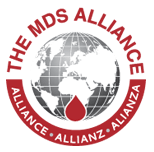filtered and irradiated blood – Cdn info.
Home Demo › forums › Patient Message Board › filtered and irradiated blood – Cdn info.
- This topic has 0 replies, 1 voice, and was last updated 18 years, 5 months ago by
shirlsgirl.
-
AuthorPosts
-
November 13, 2005 at 6:38 pm #9943
shirlsgirl
MemberMore info sent by a friend who works in blood bank at a local hospital:
“I went to the Transfusion Medicine section of the Canadian Blood Services website to see if I could find any relevent information. At the Henderson, we only give irradiated blood with the consent of a Hematologist and usually only for patients undergoing transplants. If a patient is a candidate for irradiation, he/she shouldn’t have to ask for it because their doctor should have already requested it from the bloodbank. It is an added cost for the hospital so I understand why docs may be refusing it if the patient doesn’t really need it. We have had interference from patient’s families in the past where special treatment has been demanded and depending on how high up the chain of command the family member is, they get it. (even though the patient doesn’t medically require it.) It all comes down to the almighty dollar.
Another consideration is the CMV status of the patient. If they are CMV negative they need to receive CMV negative blood products.
” Cytomegalovirus (CMV) may be of concern for certain patients. To reduce the frequency of CMV transmission, Canadian Blood Services manufactures leukoreduced cellular components. For some patients at particularly high risk of severe CMV disease, (e.g., fetus requiring Intra Uterine Transfusion *IUT), or a CMV-seronegative, allogenic, hematopoietic stem cell recipient), clinicians may choose, in addition to the use of LR components, to transfuse components from CMV-seronegative donors.
In life-threatening situations, the administration of leukoreduced blood and blood components should not be delayed due to unavailability of CMV-seronegative blood.”Here’s some info:
Prevention of Transfusion-Associated Graft versus Host Disease
Related Links
Description
Clinical Presentation
Investigation
Reporting
Further Reading
Currently the only method of preventing transfusion-associated graft versus host disease (TA-GVHD) is to gamma irradiate cellular components at risk of causing TA-GVHD or destined for at risk recipients. Current techniques to leukoreduce cellular blood components are not adequate to prevent TA-GVHD
Irradiated blood is prepared by exposing the component to a source of gamma irradiation. To eliminate the proliferative capacity of leukocytes, the central midplane of the canister should receive 2500 cGy and the lowest dose delivered to any portion of the canister should be 1500 cGy.
Canadian Blood Services produces the following gamma irradiated products:
Red Blood Cell products, LR
Platelets, LR
Platelets Apheresis, LR
Gamma irradiation, in the doses recommended for the prevention of TA-GVHD, does not affect the function of platelets. However, it does result in some damage to the erythrocyte membrane so that the permitted storage date of red cell concentrates is 28 days following irradiation (or the usual expiry date, whichever is shorter). There is also a more rapid accumulation of potassium in the extracellular fluid of the red cell concentrates. For this reason, for neonates and young children, it is preferable to gamma irradiate red cell components as close to the time of transfusion as possible. In these patients, if the units have not been irradiated just prior to transfusion, removal of extracellular fluid, (to reduce risks associated with high plasma potassium), may be considered.
Updated: 2005-07-26″ -
AuthorPosts
Register for an account, or login to post to our message boards. Click here.
- You must be logged in to reply to this topic.









